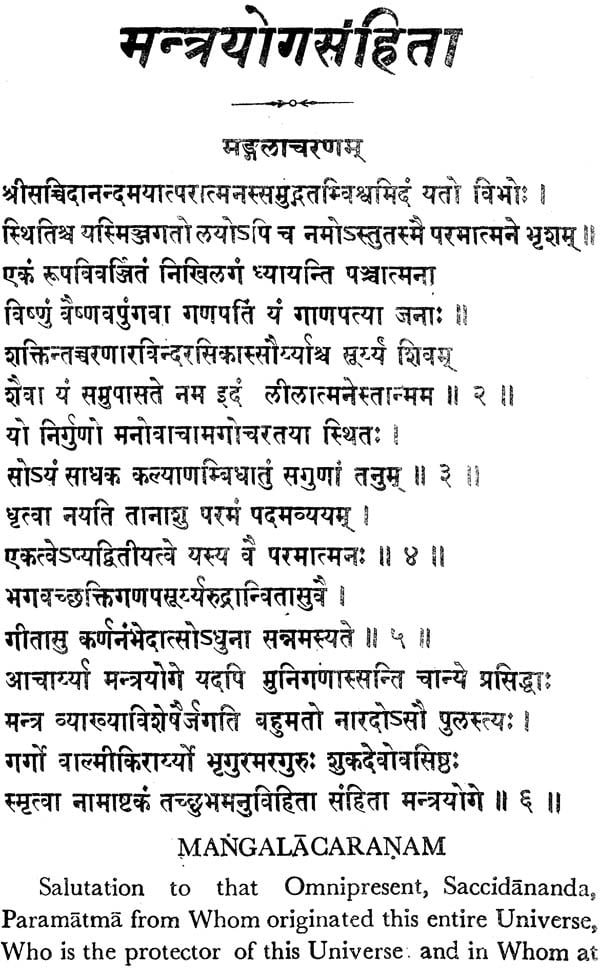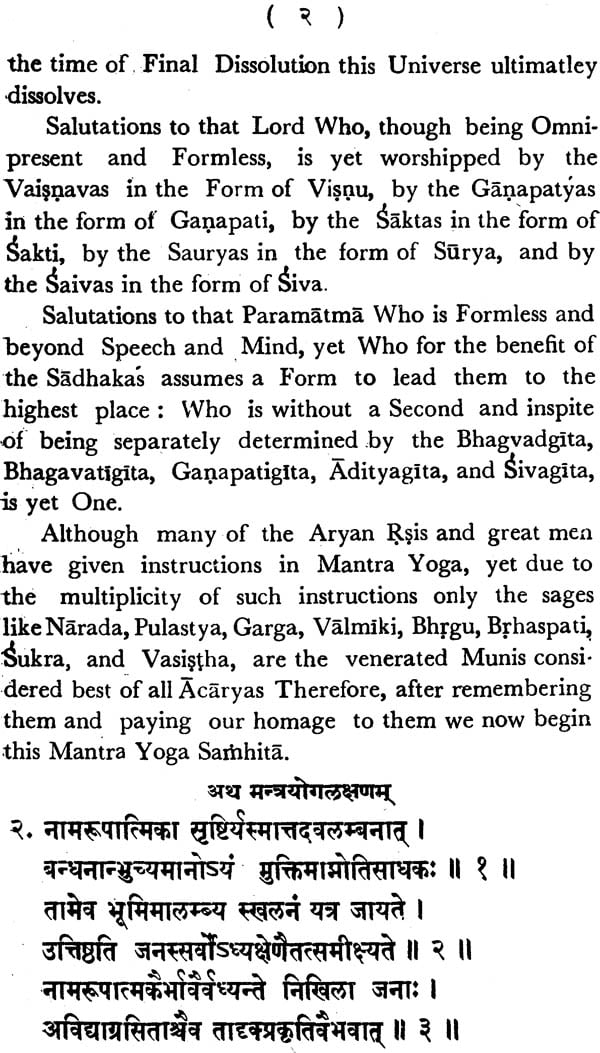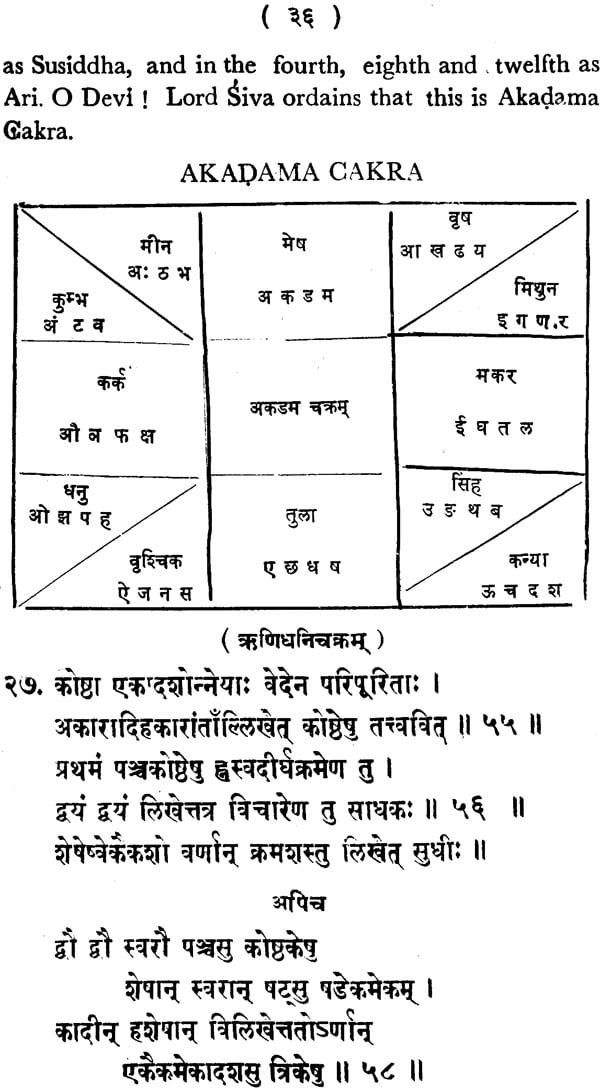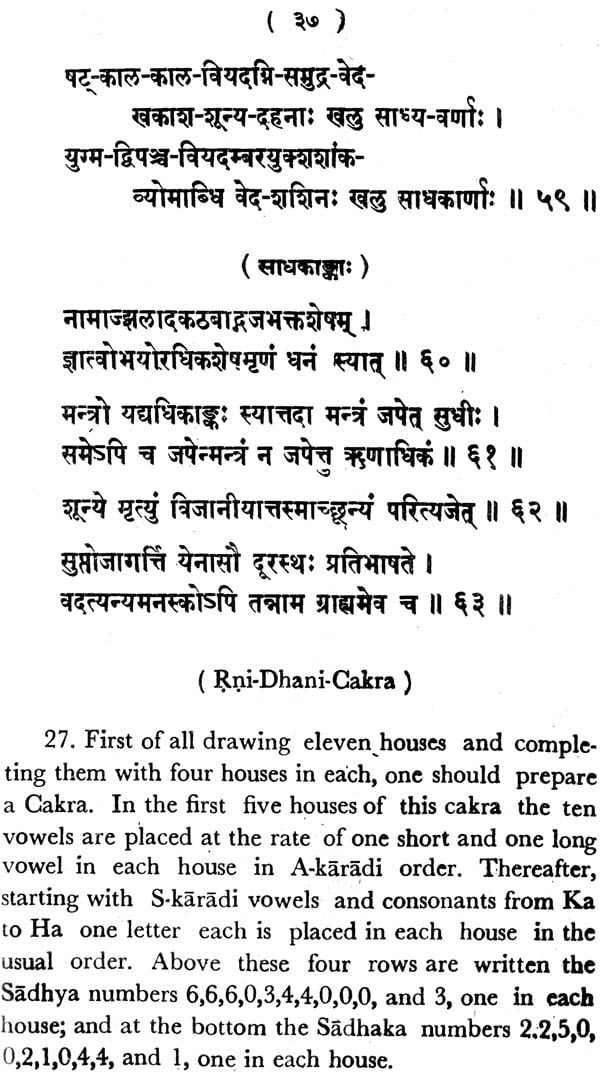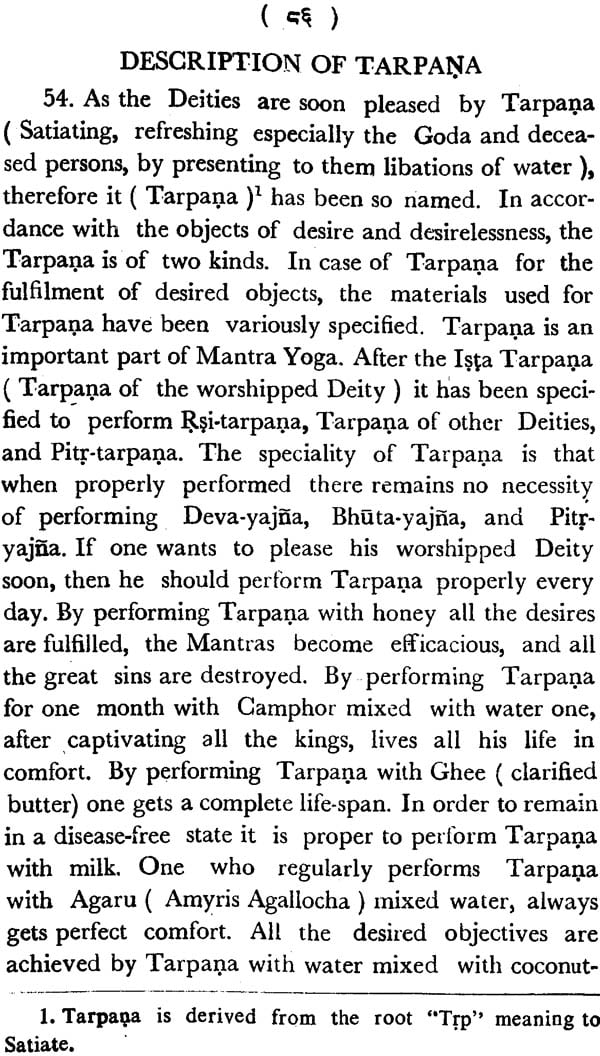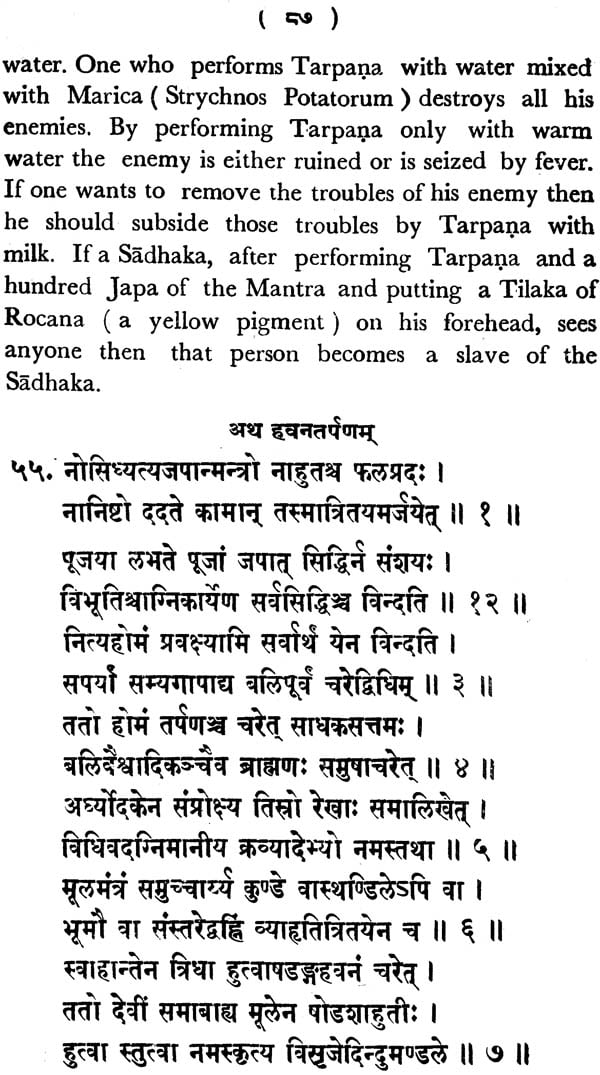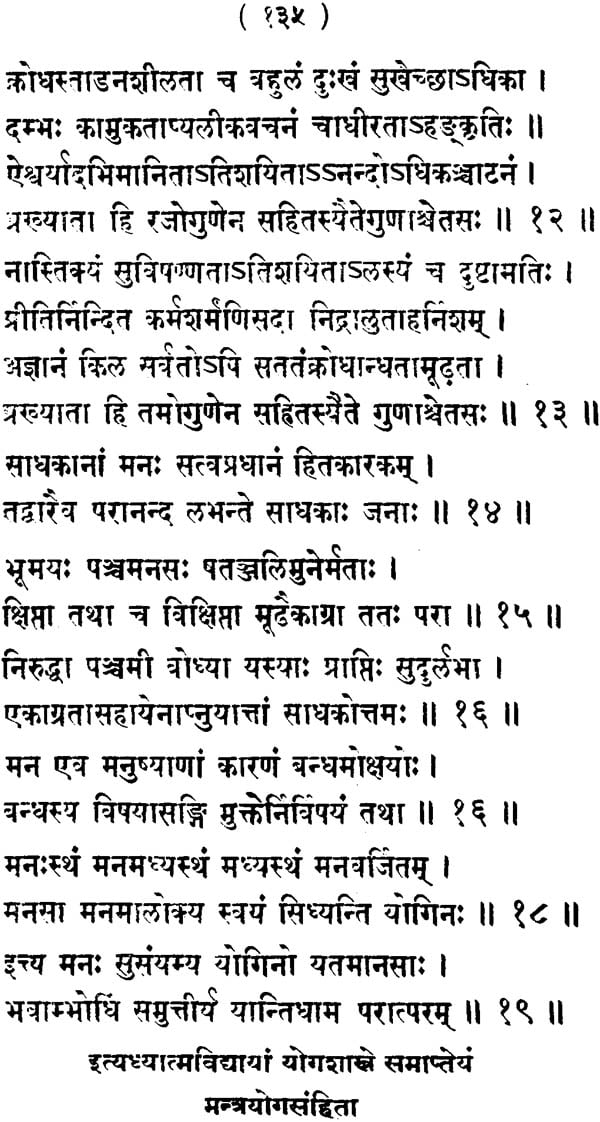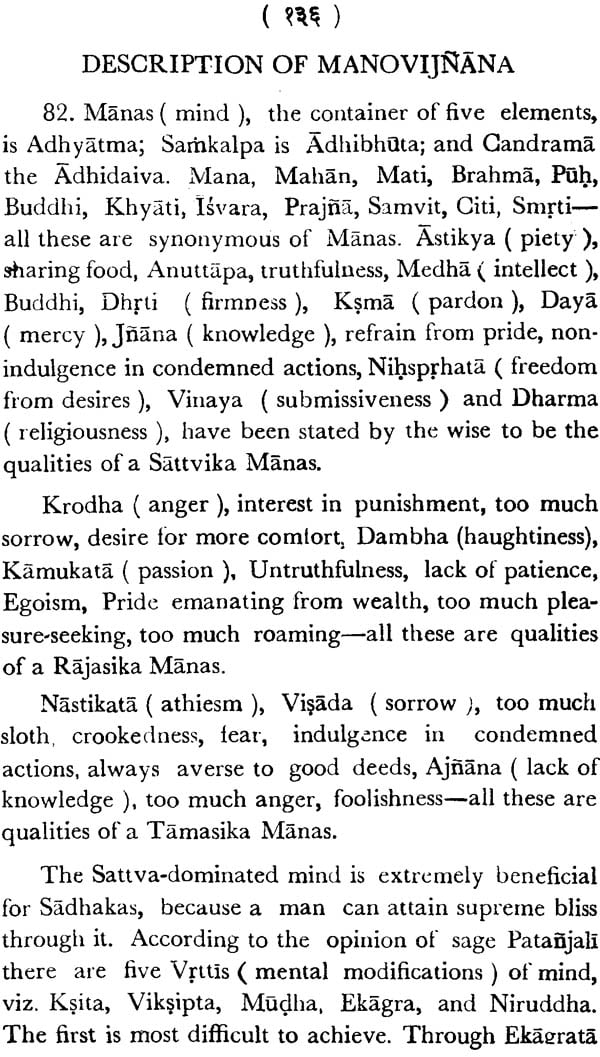
Mantra-Yoga Samhita
Book Specification
| Item Code: | IDJ237 |
| Author: | Dr. Ramkumar Rai |
| Publisher: | Chaukhambha Publishers |
| Language: | (Sanskrit Text with English Translation) |
| Edition: | 2014 |
| Pages: | 142 |
| Cover: | Hardcover |
| Other Details | 9.0 inch X 6.0 inch |
| Weight | 280 gm |
Book Description
Preface
Mantra Yoga is one of the four kinds of yogas others beings Hatha-, Laya-, and Raja-yoga. The creation; being of the nature of name and form, the devotee only through the support of name and form can form can free himself from the bondage of creation and attain salvation. When a person falls on the ground he can rise up again only with the support of that very ground. Nominal and formal subjects keep a person in bondage,. Nominal and formal nature and splendour prey on men through their ignorance. Now that Yoga, which is practised through the support of nominal sound and emotional form contemplated in accordance with the directions of one's own nature and disposition is called Mantra Yoga. And according to the predominance of the five element human nature being of five kinds, the procedure of worship described in Mantra Yoga is also of five kinds. This is called Pancopasana.
Science of Mantra Yoga:
Where there is some activity there always is some vibration; where there is vibration there also is an essential possibility of the presence of sound. The creation is also a kind of activity and the vibration emanating from the first billow of the nature, and the sound which is produce thereby, is the auspicious Pranava in the form of Omkara. Just as the sound of the nature connected with state of equipoise is Omkara of the form of Brahma, Visnu, and Siva, so are there the various sounds of the nature in the state of inequality-and these various sounds are the seed-mantras of various worships. As the creation is five-elemental the entire creation is divided into five parts, and therefore the Vedas have ordained five kinds of worship. According to the nature and disposition if the Guru instructs the Mantra and according to the Bhavana of the disciple instructs the Deity to be worshipped, then the disciple desirous of emancipation can soon reach his destination.
Different steps (Angas) of Mantra Yoga:
Mantra Yoga is embellished with sixteen constituent parts or steps (angas) which are Bhakti, Suddhi, Asana, Pancanga-sevana, Dharana, Divyadesa-sevana, Prana-kriya, Mudra, Tarpana, Havana, Bali, Yaga, Japa, Dhyana and Samadhi. All these steps are integral parts of this system and are to be practised in their sequence of enumeration.
The Present Samhita:
The Mantra Yoga Samhita, which is being presented here for the first time in English, is the only systematic work in which this Yoga has been described in detail and step-by-step with such clarity and insight that any sadhaka can immensely benefit from it in beginning and continue his Sadhana to its fruition. Each step has been described with all the connected rituals and the most important part of the work is Mantra Astrology which is quite a closely guarded secret of the system. This part would enable a sadhaka to determine the time, place, day and date for beginning his Sadhana, and also determine the Mantra and the Deity suitable to his disposition. Without such predetermination a Sadhana may not only remain anfractuous but at times become harmful to the sadhaka. Therefore, it is need less to stress the importance of such a work. Moreover, there is no other work on the subject now available and this fact makes it an indispensable companion for every sadhaka.
I have tried to include various charts and diagrams to make the subject more comprehensive. Their picturisation is in strict accordance to their description found in the work.
With my limited knowledge, which is mostly confined to the practical side of the subject and obtained through my contact with various mystics of the country, I have tried to make the work as useful as possible, yet the subject being highly technical and mysterious, certain obscurities at places may not be ruled out.
In the end, I extend my heartiest thanks to the proprietors of the famous publication concern, Chaukhambha Orientalia of Varanasi, or bringing out this work so beautifully and promptly.
| Preface | ||
| 1 | Mangalacarana | 1 |
| 2 | Characteristics of Mantra-yoga | 3 |
| 3 | Science of Mantra Yoga | 5 |
| 4 | Eulogy of Sadhana | 6 |
| 5 | Need for Initiation | 7 |
| 6 | Greatness of Guru | 8 |
| 7 | Characteristics of a Sadguru | 9 |
| 8 | Characteristics of a Sisya or Disciple | 11 |
| 9 | Characteristics of a Reprehensib leguru | 11 |
| 10 | Description of Initiation | 12 |
| 11 | Determination of Month | 14 |
| 12 | Determination of Day | 15 |
| 13 | Determination of Tithi | 16 |
| 14 | Determination of Naksatra | 17 |
| 15 | Determination of Yoga | 18 |
| 16 | Determination of Karana | 18 |
| 17 | Determination of Lagna | 18 |
| 18 | Determination of Paksa or Fortnight | 19 |
| 19 | Determination of the place for Initiation | 20 |
| 20 | Procedure for the Determination of Mantra | |
| 21 | Kulakula Cakra | 22 |
| 22 | Science of Kulakula cakra of another Tantric School | 24 |
| 23 | Rasi-Cakra | 25 |
| 24 | Nakstra Cakra | 32 |
| 25 | Akadama Cakra | 35 |
| 26 | Rni-Dhani-Cakra | 37 |
| 27 | Determination of Upasya | 40 |
| 28 | Science of the five Deities | 41 |
| 29 | Determination of the Right of worsip | |
| 30 | Constituent parts of Mantra Yoga | 44 |
| 31 | Description of Bhakti | 46 |
| 32 | Description of Suddhi | 47 |
| 33 | Dik-suddhi | 47 |
| 34 | Sthana-suddhi | 48 |
| 35 | Kaya-Suddhi | 49 |
| 36 | Antah-suddhi | 51 |
| 37 | Description of Asanas | 52 |
| 38 | Differentiation of Seat | 53 |
| 39 | Serving the five Organs | 55 |
| 40 | Description of Acaras | 57 |
| 41 | Lata Sadhana | 60 |
| 42 | Seven Adhikaras or Rights | 63 |
| 43 | Description of Dharana or Concentration | 64 |
| 44 | Description of Rights of Dharana | 65 |
| 45 | Ten Samskaras (Rituals) of Mantra | 67 |
| 46 | Matrka-yantra | 68 |
| 47 | Description of Divyadesa | 71 |
| 48 | Prana-kriya | 72 |
| 49 | Description of Pranayama | 73 |
| 50 | Bahya-Matrka-Nyasa | 74 |
| 51 | Matrka-Nyasa | 76 |
| 52 | Rsi-Nyasa | 79 |
| 53 | Description of Mudras | 82 |
| 54 | Description of Tarpana | 86 |
| 55 | Description of Havana | 88 |
| 56 | Description of Bali | 91 |
| 57 | Description of Yaga | 93 |
| 58 | Upacaras of worship | |
| 59 | Twenty-one Upacaras | |
| 60 | Sixteen Upacaras | 96 |
| 61 | Ten Upacaras | 96 |
| 62 | Five Upacaras. | 97 |
| 63 | Description of Upayaga | 98 |
| 64 | Description of Japa | 100 |
| 65 | Description of the place of Sadhna | 103 |
| 66 | Description of competency for Sadhana | 104 |
| 67 | Mantra-Siddhi | 105 |
| 68 | Purification of Five Organs | 106 |
| 69 | Description of Siddhi | 107 |
| 70 | Description of kinds of Mantras | 109 |
| 71 | Description of Mantra-Bija | 111 |
| 72 | Description of the origin of Mantras | |
| 73 | Eulogy of Pranava | 118 |
| 74 | Eulogy of Brahma-Mantra | 119 |
| 75 | Description of Kara-mala | 121 |
| 76 | Description of Rosary | 124 |
| 77 | Concentration | 125 |
| 78 | Form- Differentiation | 127 |
| 79 | Description of Special form-differentiation | 130 |
| 80 | Description of the kinds of Dhyana | 132 |
| 81 | Description of Samadhi | 133 |
| 82 | Description of Manovi-jnana | 136 |
| 83 | Sanskrit Index | 139 |
| 84 | English Index | 141 |
